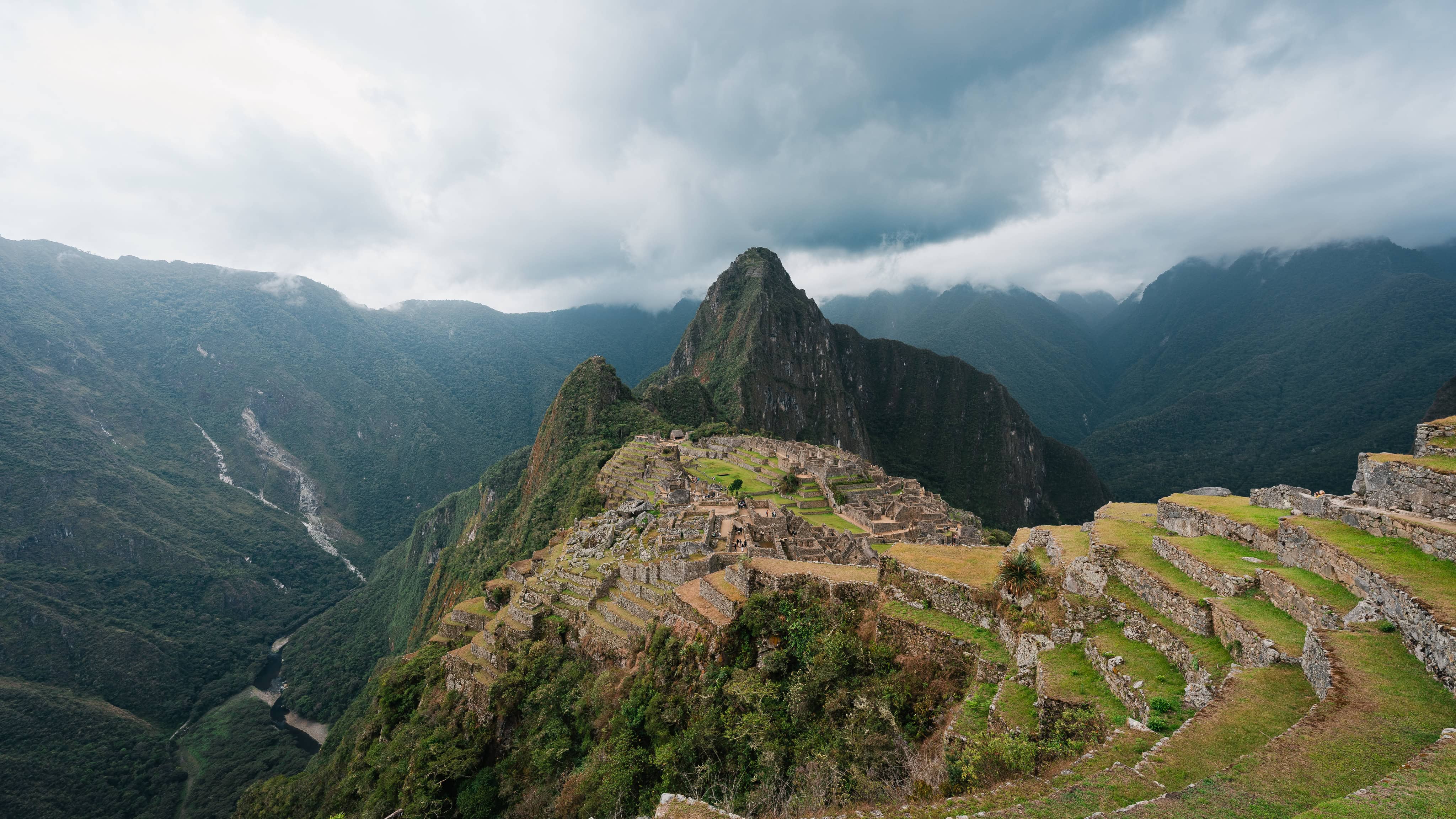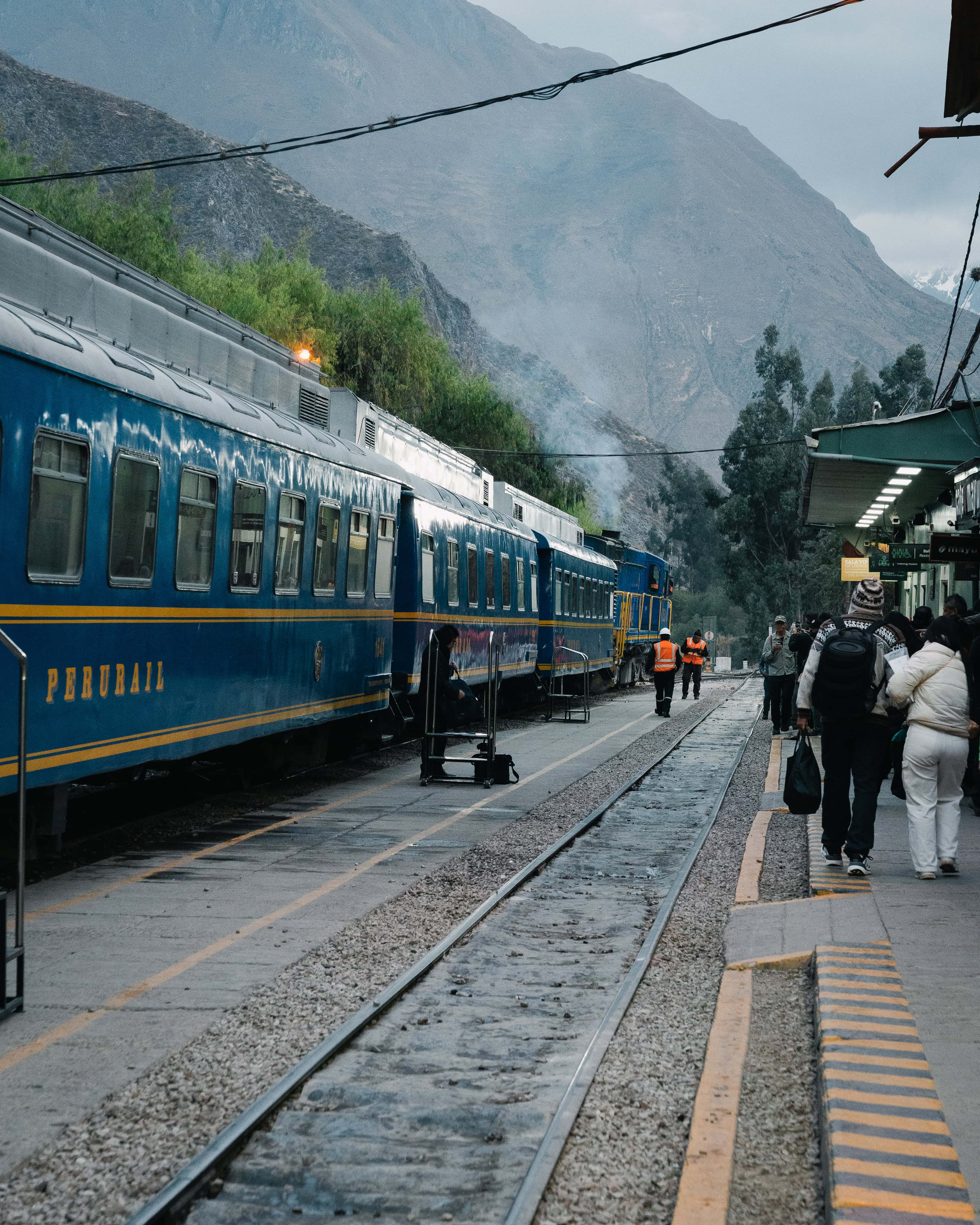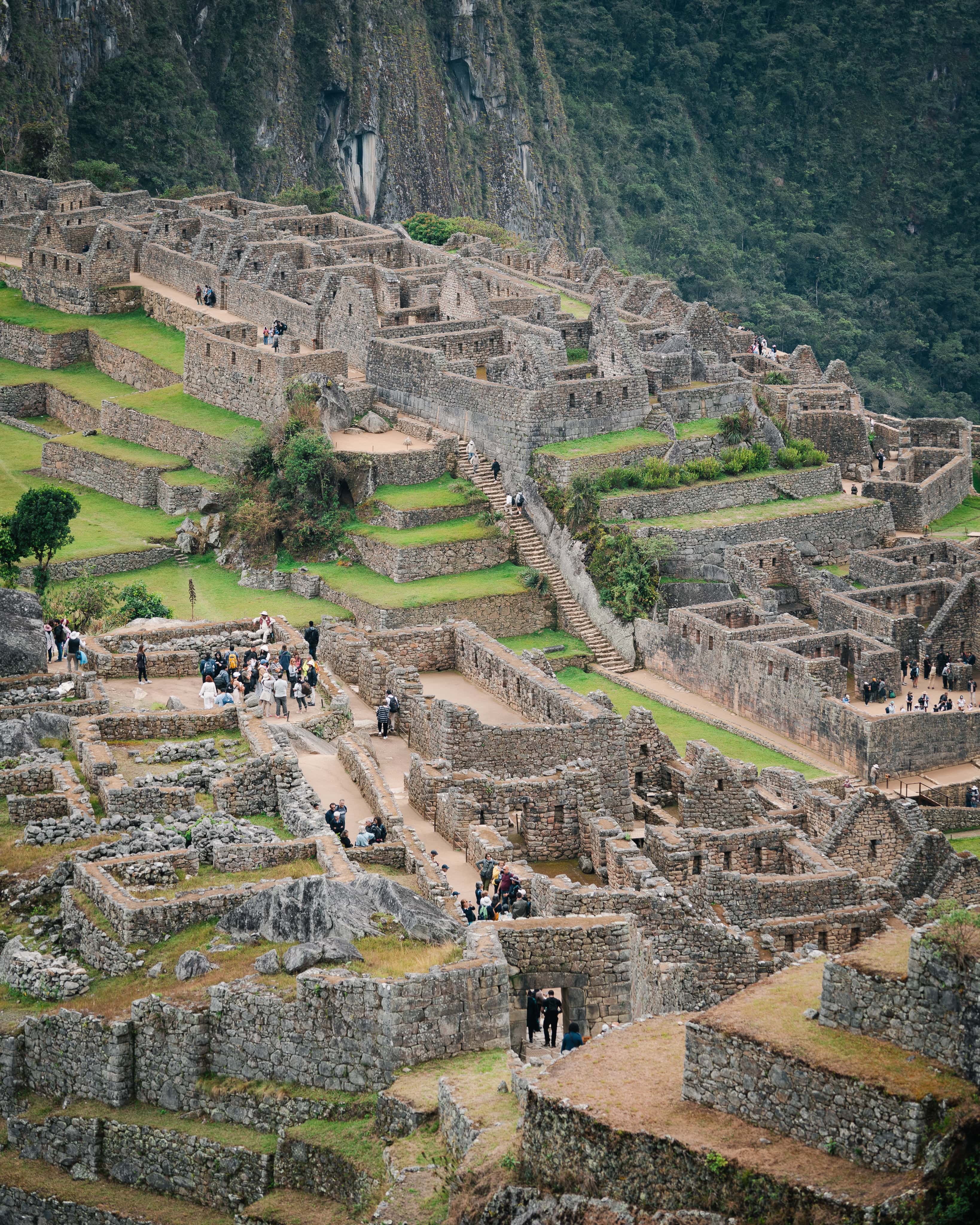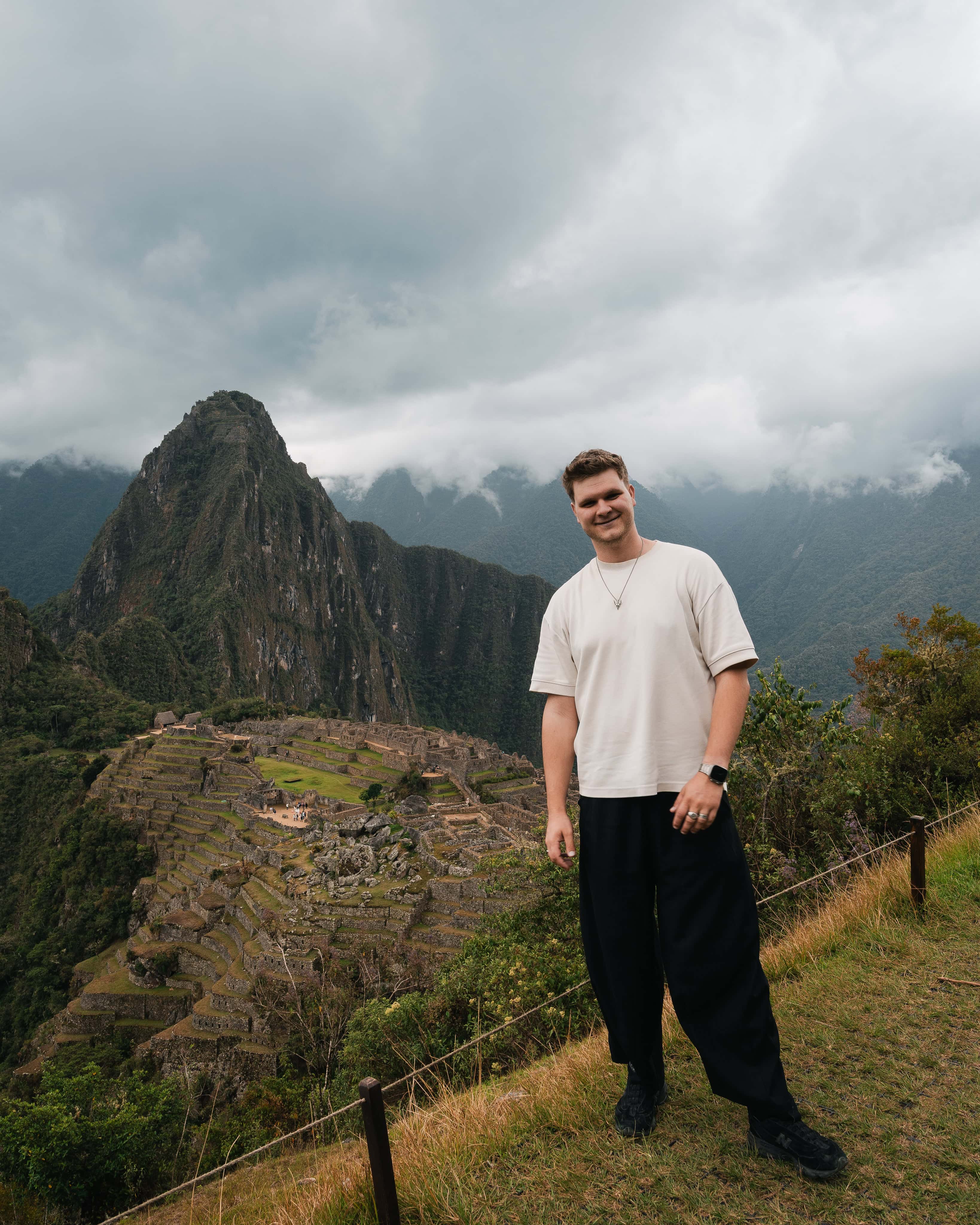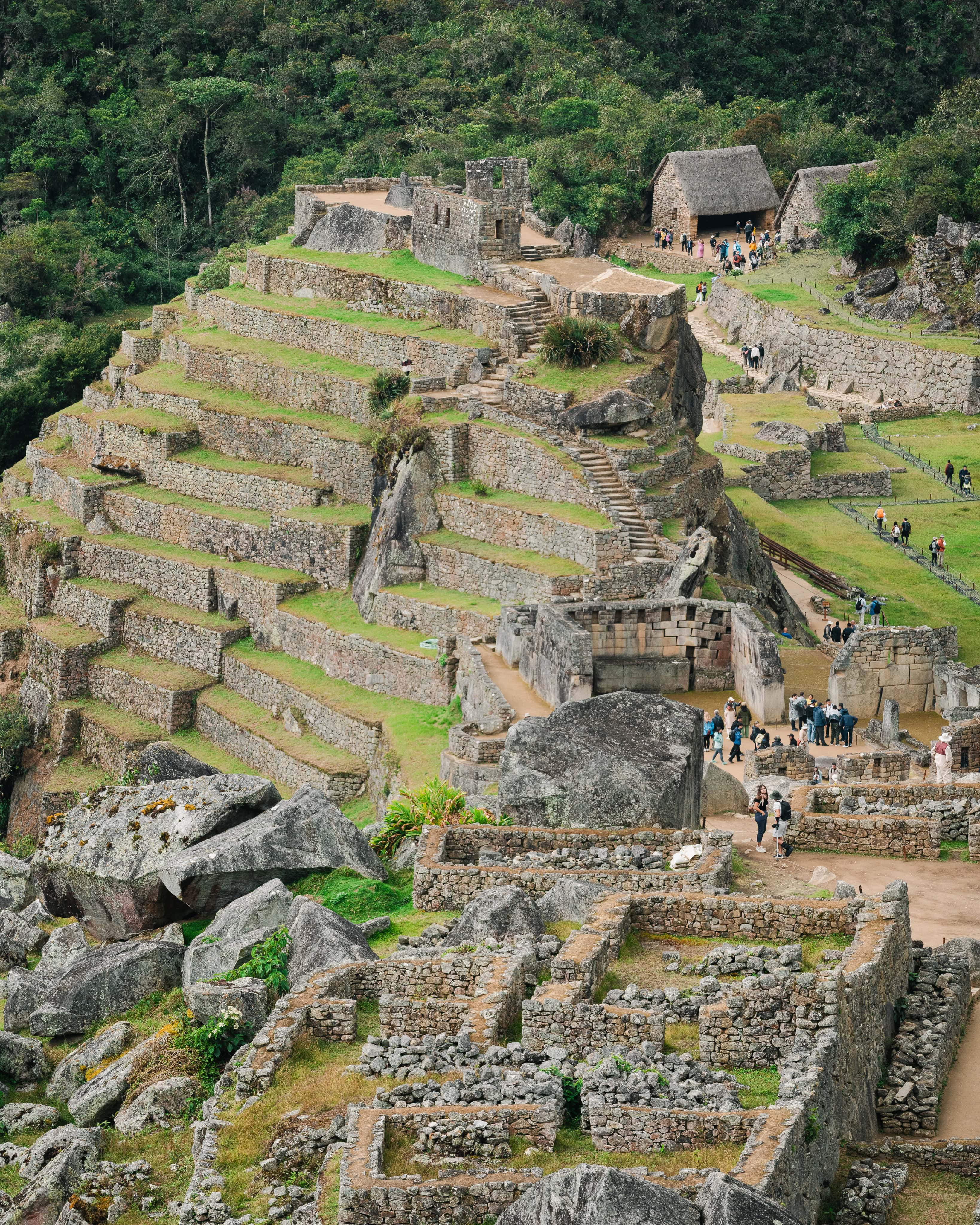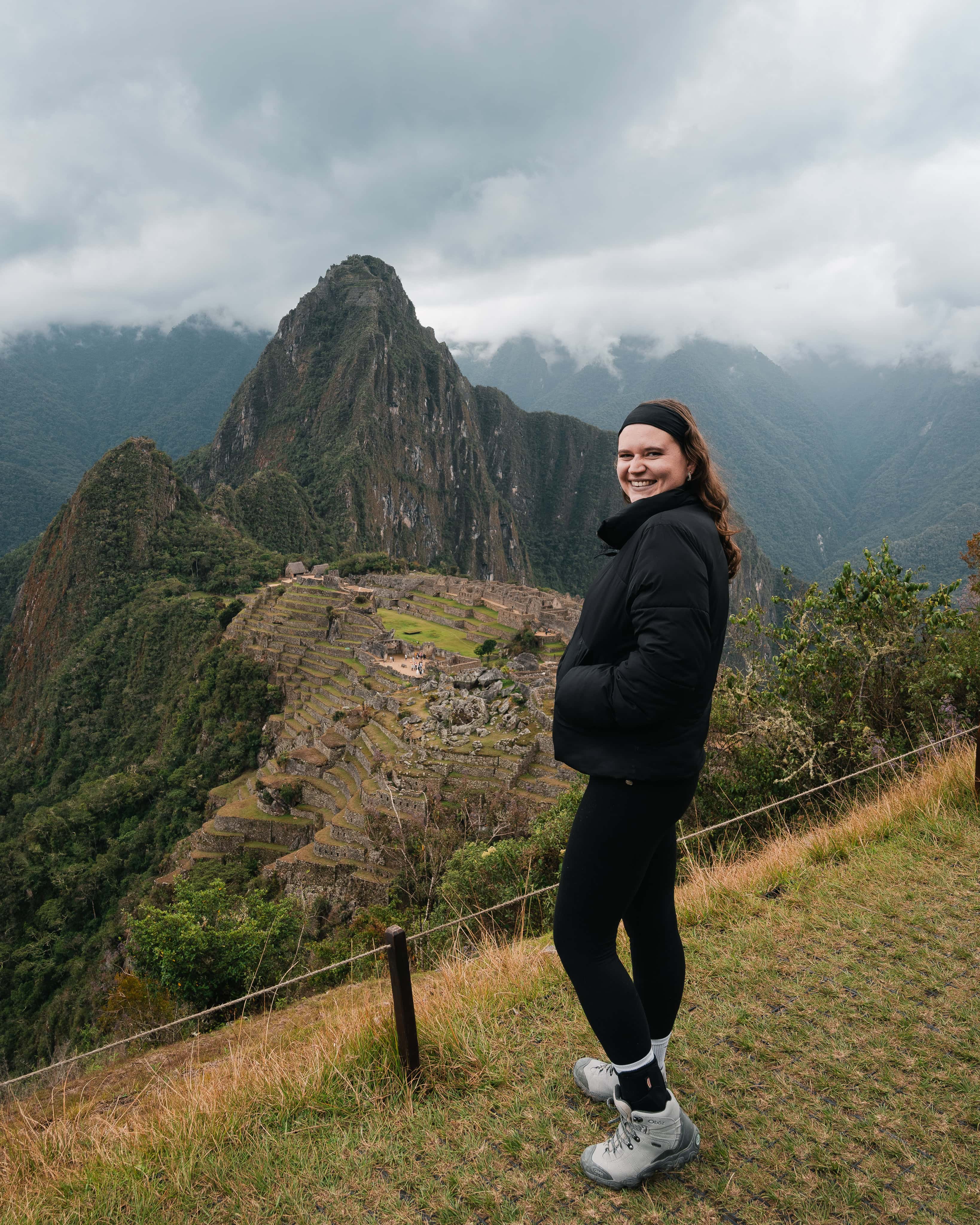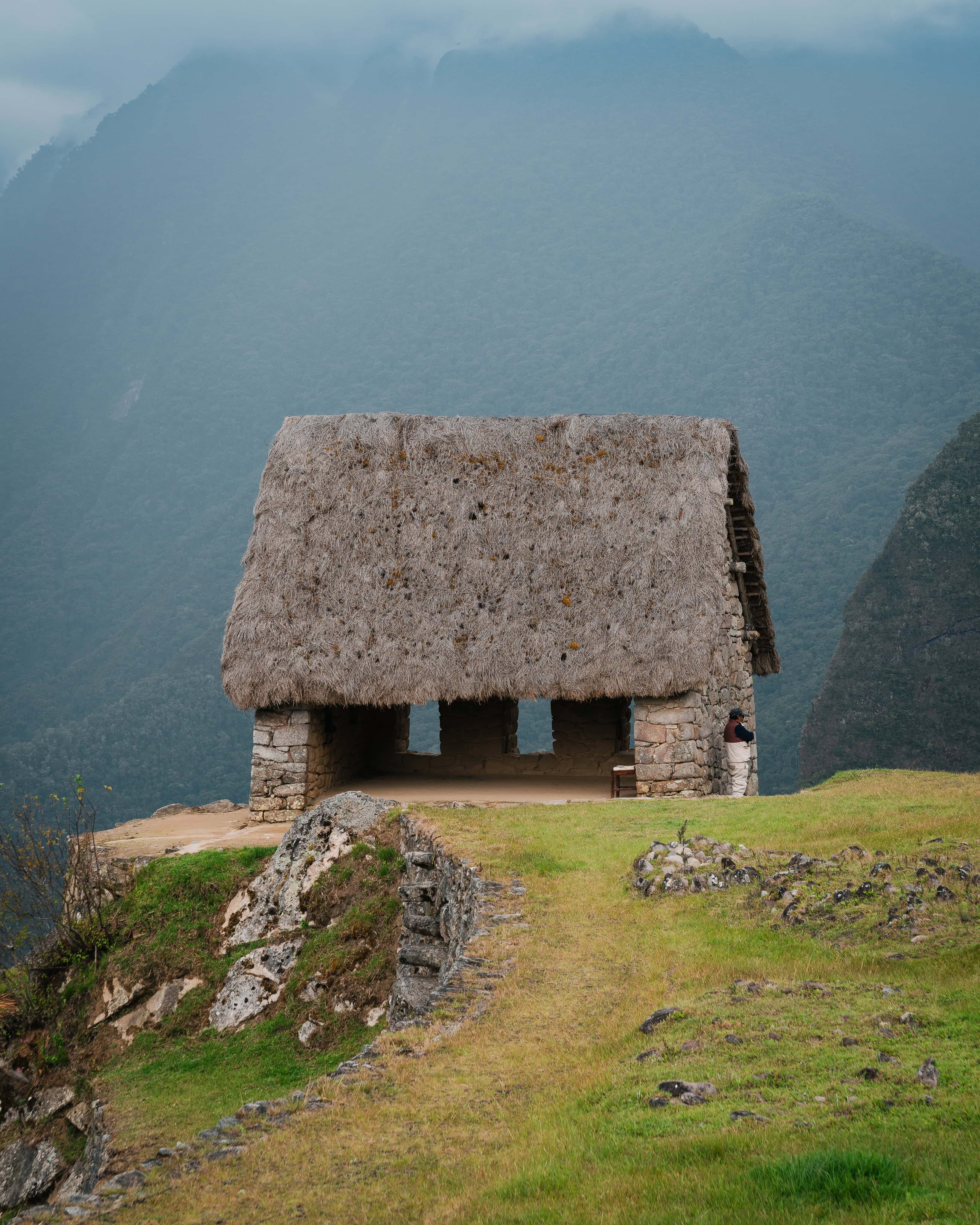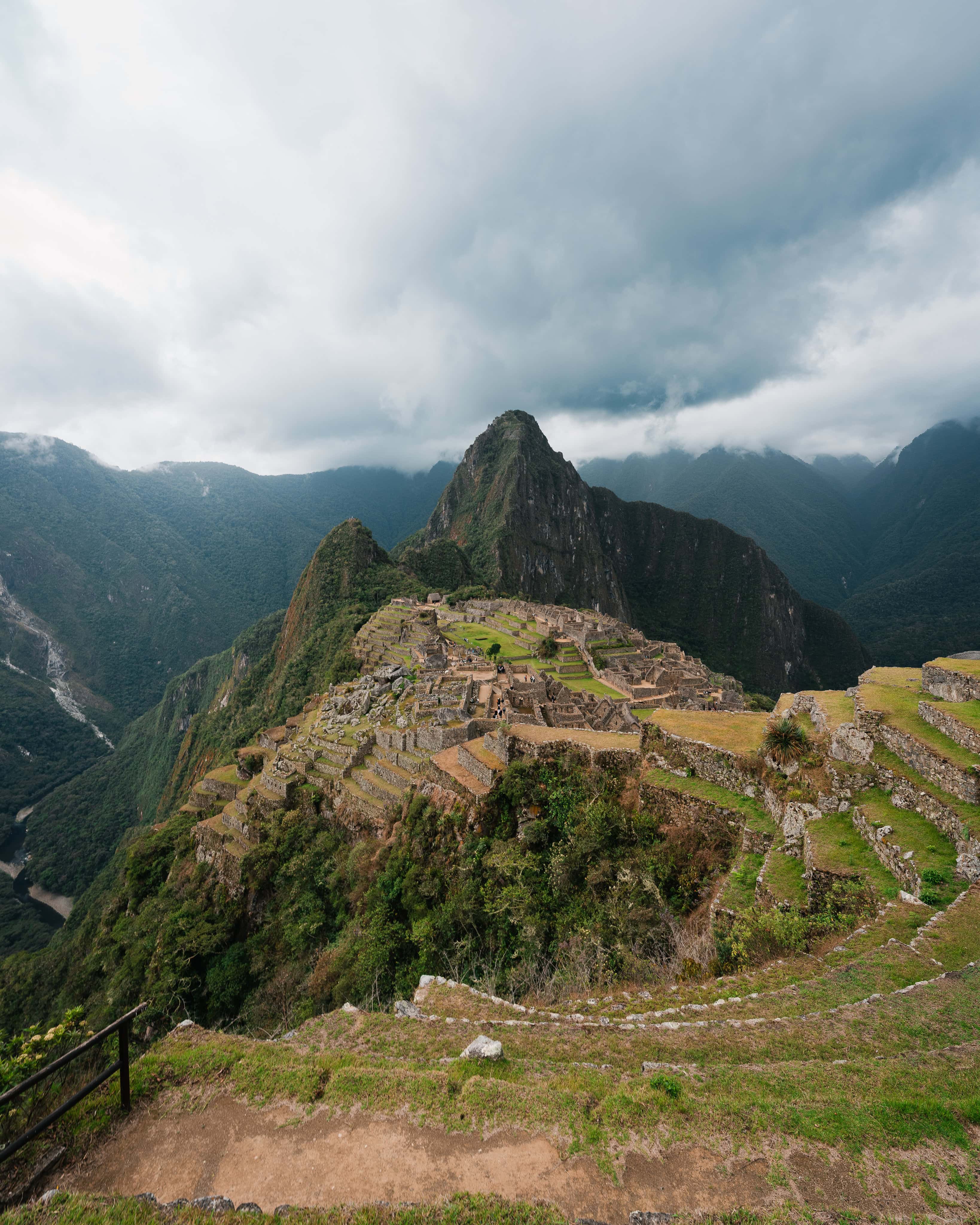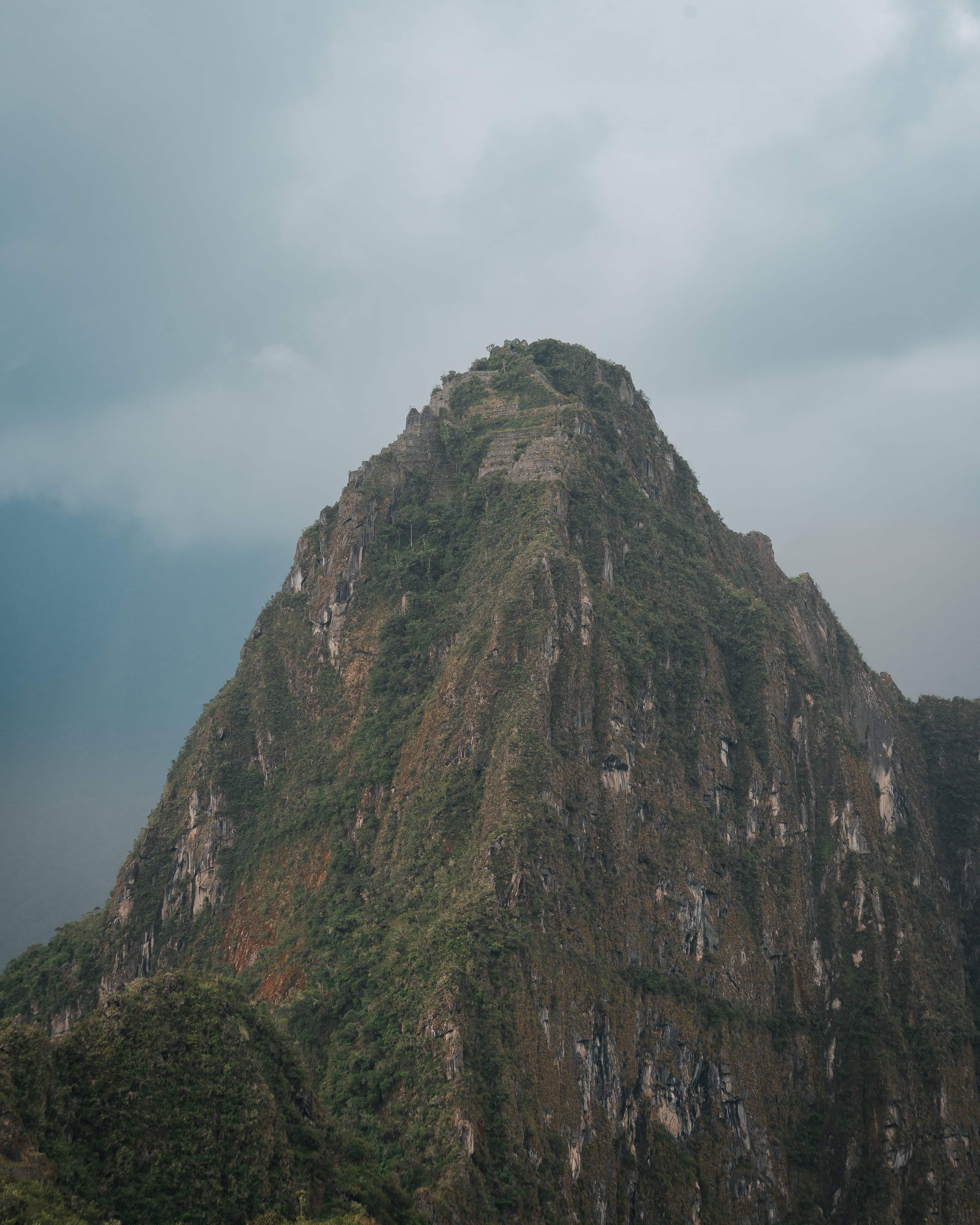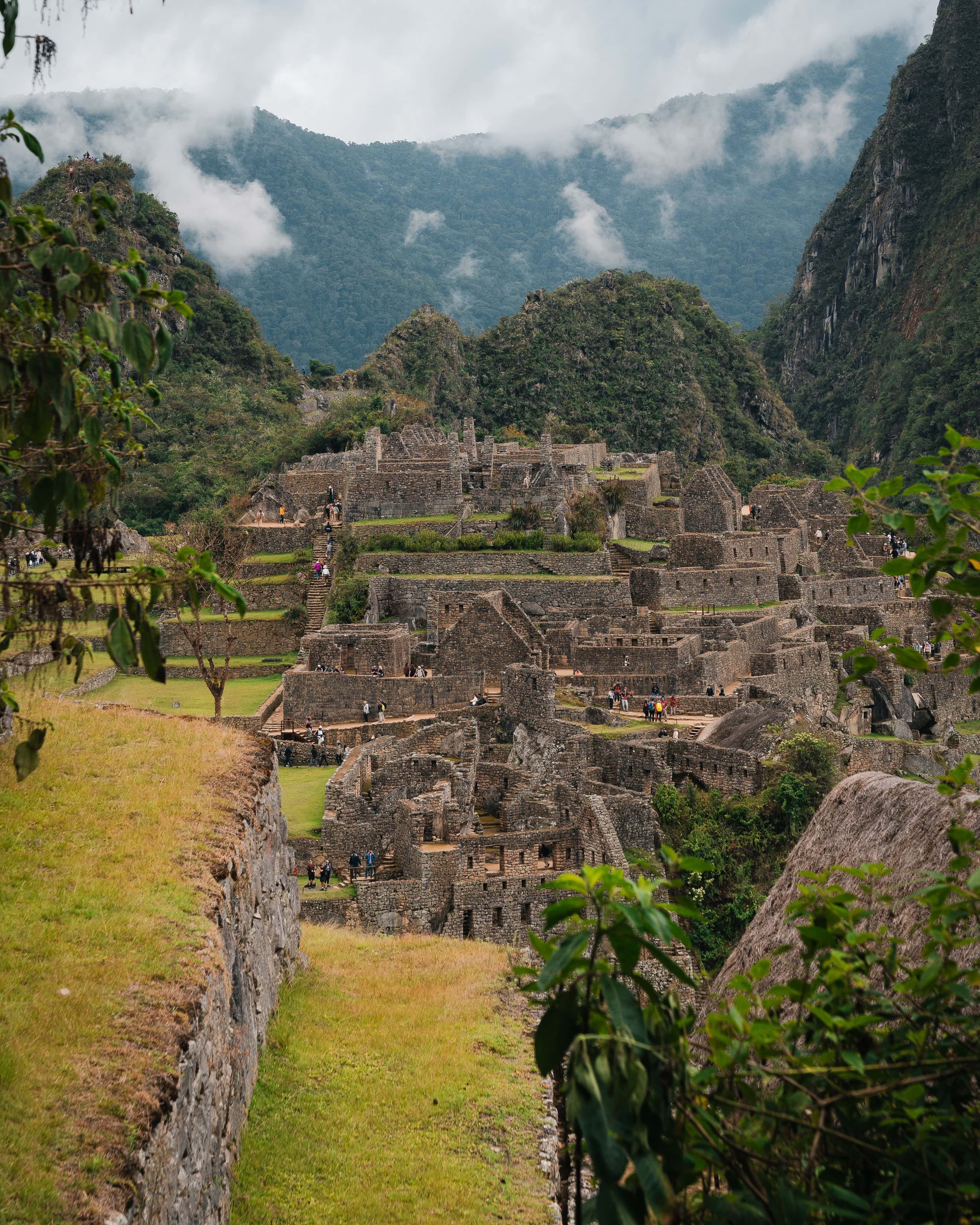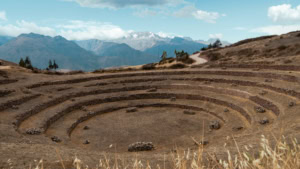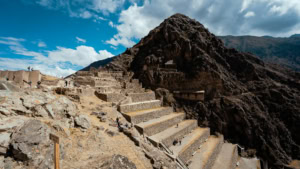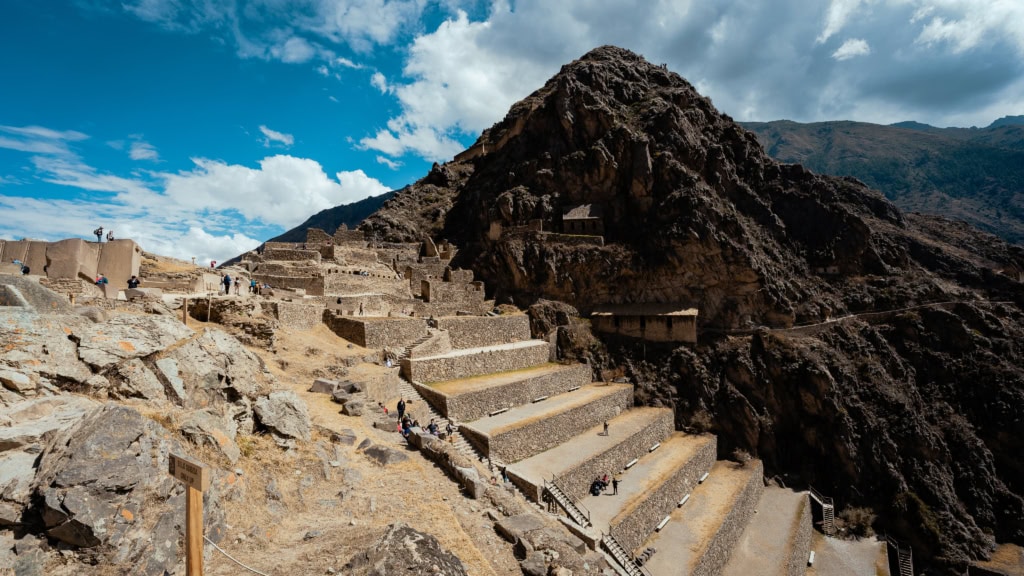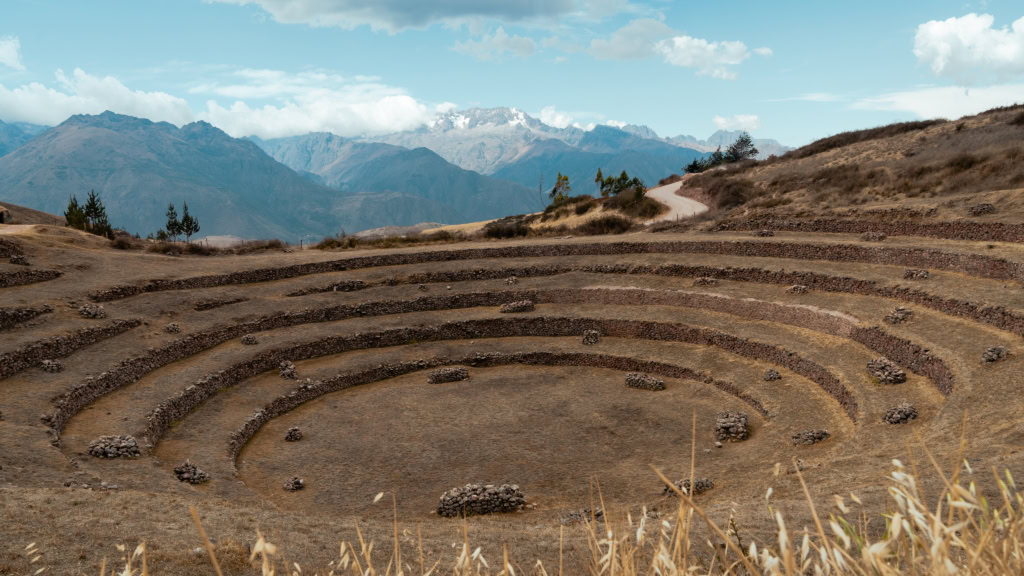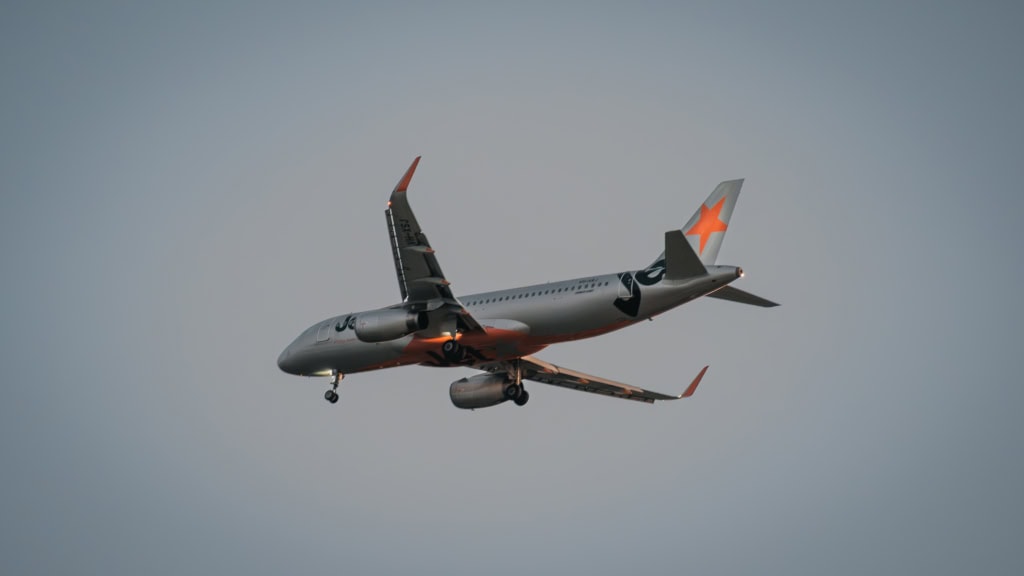Machu Picchu is one of the world’s most famous and sensitive tourist attractions: a 15(th)-century Inca settlement that can now only be visited under strict conditions. This article explains its location, history and how to get there, as well as the different trekking options, practical rules (such as ticket prices, time slots and access zones), alternative treks and summit options (Huayna Picchu and Montaña Machu Picchu), and health and packing tips.
Location, climate and initial orientation
Machu Picchu is located in the eastern Andes of Peru, within the ‘Historic Sanctuary of Machu Picchu’, on a ridge between the Machu Picchu and Huayna Picchu mountains. The main complex is located at an altitude of around 2,430 metres. This is significantly lower than Cusco, but still high enough to cause exertion. The terrain drops steeply to the Urubamba River, combining an Andean landscape with cloud forest vegetation to create the famous, mystical panorama.
There are two distinct seasons: the dry season (roughly April to October, with the best conditions from May to September) and the rainy season (November to March, with the heaviest rainfall in February). April to May and September to October, the so-called ‘shoulder seasons’, offer the best compromise between good weather and moderate visitor numbers.
Brief historic overview
Machu Picchu was built in the 15th century during the expansion of the Inca Empire. Emperor Pachacuti (born around the early/mid-1400s) is often cited as the builder. The site probably served as a royal country residence and ceremonial centre. After the collapse of the Inca Empire, the site was abandoned and remained hidden from the public eye until Hiram Bingham brought it to the attention of the scientific community in 1911. However, local residents had always known about the place. UNESCO highlights Machu Picchu as an outstanding example of Inca urban planning.
Tickets, new admission rules and visitor numbers
Since 2024/25, the admission rules have undergone significant reform. The Peruvian administration has introduced visitor quotas, fixed admission times, and predetermined visitor circuits (i.e. various routes through the Llaqta) in order to minimise erosion and overcrowding. Additionally, daily visitor limits have been set: outside the high season, the daily limit is lower, while a higher limit is set for the high season. These values and the new circuit structure are specified in the official documents and announcements from the government. Tickets are personalised (including name and passport number) and non-transferable. Personal ID is checked upon entry. Ticket booking is managed by the state platform or the official TuBoleto/Ministerio de Cultura portal.
Important:
- Book well in advance: The monthly wedding season/peak season requires several months’ advance booking.
- The administration has set entry and exit times, as well as maximum visit times per circuit. Find out the exact duration when purchasing your ticket, as access is strictly monitored.
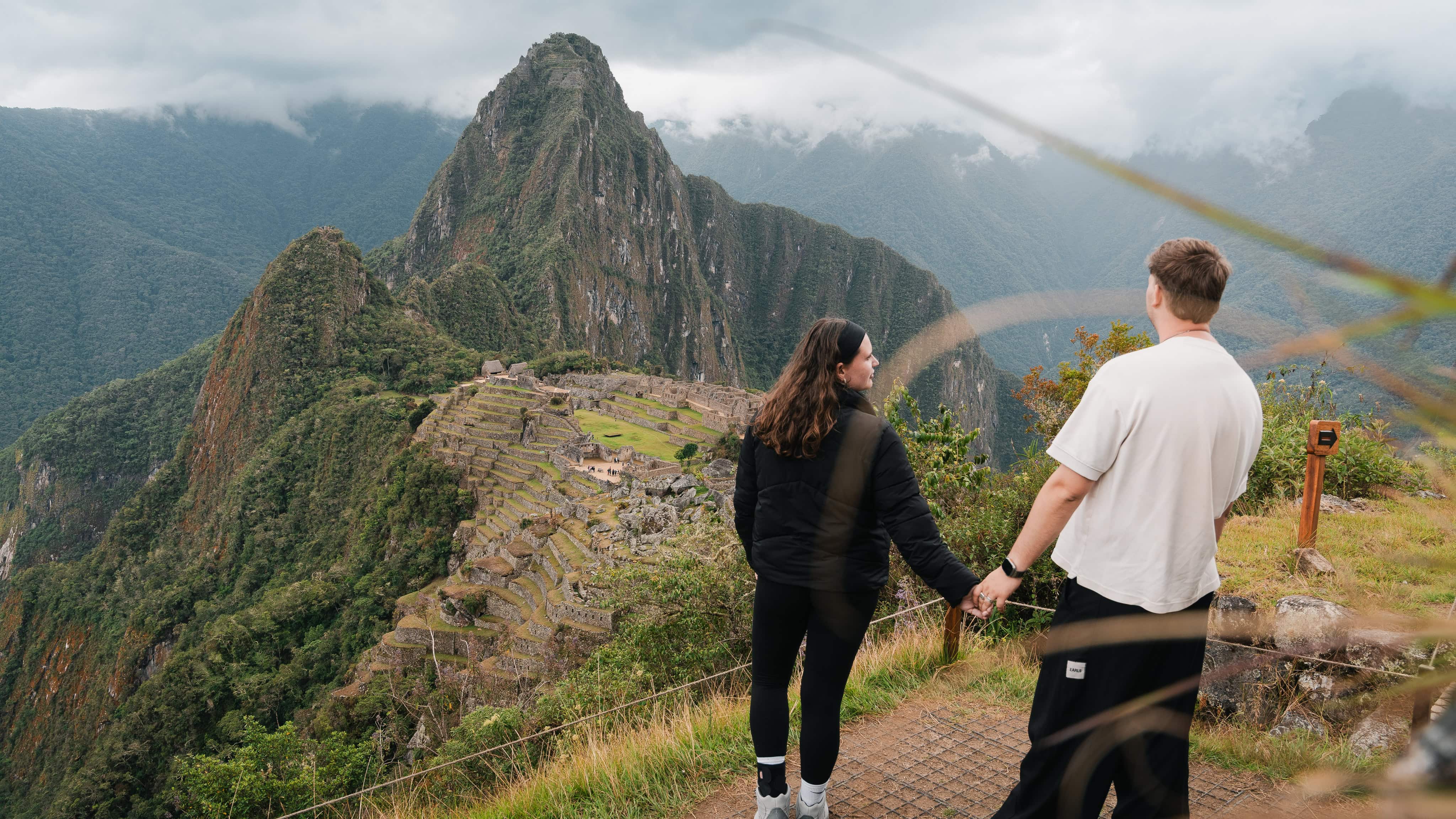
Getting there: Train, Inca Trail or other hiking trails – The three main options
There are roughly three ways to reach Machu Picchu. Each option has its own advantages and disadvantages in terms of time, cost and experience.
1) Fast and comfortable: Take the train (PeruRail/Inca Rail) to Aguas Calientes and continue by shuttle bus
Most travellers fly to Cusco, travel to Ollantaytambo, and then board a tourist train there. The trains take you to Aguas Calientes. From there, the official bus company, Consettur, runs buses at regular intervals (approximately every 10–20 minutes) to the entrance of the protected area. The journey takes about 25–40 minutes, but you can also walk. Trains and buses should be booked well in advance during the high season. PeruRail and Inca Rail offer different classes (Expedition, Vistadome and Luxury) as well as combined tickets.
2) Classic: The official Inca Trail (4 days, strictly limited)
The classic Inca Trail ends at the Sun Gate (Inti Punku), where you will catch your first glimpse of Machu Picchu on the fourth day. The route is historic, scenically spectacular and technically demanding, with many stairs each day. Permits are limited – trail regulations allow only a fixed number of people per day (including guides and support staff), and tickets are strictly managed. Early booking through licensed agencies is mandatory. Highlights include Dead Woman’s Pass (Warmiwañusqa), the highest point on the classic route at approximately 4,215 metres, and the Sun Gate (Inti Punku). Please note that the Inca Trail is usually closed in February for annual maintenance. Please check before booking.
3) Alternative trekking routes (Salkantay, Lares)
For those who have not obtained a permit for the Inca Trail, or who prefer a more challenging or secluded route, the most popular alternatives are the Salkantay route (usually 4–5 days) and the Lares route (2–4 days). The Salkantay route passes over high mountain peaks (some over 4,500 metres) and offers stunning views of mountains and lakes. It usually ends in Aguas Calientes, meaning Machu Picchu is reached by bus on the last day. Unlike the Inca Trail, there are no government-imposed daily permit limits for these trails, but they do require good physical fitness and careful organisation.
Last stop before Machu Picchu: Aguas Calientes
The last major town before Machu Picchu is Aguas Calientes. Some tourists also stay overnight in this town to complete two tours on the first and second days, respectively. There are restaurants, cafés, hotels, bakeries, and small markets where you can buy water, snacks, and travel essentials such as ponchos and walking sticks. However, the selection at the entrance to Machu Picchu itself is very limited: there is only a small shop selling drinks and snacks, as well as a few restaurants. To ensure you are relaxed and have more choice, it is therefore advisable to buy food, drinks and souvenirs in Aguas Calientes before taking the bus up to the entrance.
The three main circuits through the site
Since the introduction of the new visitor regulations, access to Machu Picchu is exclusively via designated circuit routes. Each circuit has a clearly defined direction and different viewpoints, so you should consider which option suits your interests in advance.
- Circuit 1 (Panorama Route): Leads to classic viewpoints above the site, such as the ‘guard house’. This is where the famous postcard photos are taken. The route then loops through the upper terraces, allowing for a relatively short stay in the core area. This route is ideal for those who mainly want to take photos.
- Circuit 2 (Complete Route): The longest and most comprehensive route. It combines the panoramic terraces with a tour of the main area of the ruins, including the Temple of the Sun, the main square, the royal palace, the sacred rocks, and other central structures. This route is particularly popular as it includes both photo spots and the most important Inca structures.
- Circuit 3 (Lower Area): Starts lower down and offers a shorter tour of selected sectors. Although it is less panoramic, it is ideal if you have booked additional tickets for Huayna Picchu or Machu Picchu Mountain, as these options are linked to Circuit 3. This route may also be more comfortable for visitors with limited fitness.
Important: Once you have entered the circuit, you cannot change direction or go back. Therefore, you should carefully consider which circuit best suits your personal goals before booking.
Huayna Picchu vs. Machu Picchu Mountain: Differences, tickets, requirements
There are two additional summit options that often need to be booked separately:
- Huayna Picchu (Wayna Picchu): the pointed peak behind the classic photo motif. The ascent is steep and technically demanding, leading over narrow paths and steep stairs. From there, you can enjoy spectacular views of the complex. Ascent is limited and special time slots with restrictive quotas are allocated (tickets must be booked separately as an add-on to the route and are often fully booked). Allow several months’ lead time during the high season.
- Machu Picchu Mountain (Montaña): Higher and further forward than Huayna Picchu, this route is less steep and offers different perspectives. It is a good alternative when Huayna Picchu is fully booked. Here, too, time slots are defined, and the permitted duration of stay may be specified.
Tip: When purchasing your ticket, check which circuit variant is included (e.g. Circuit 3A = Huayna Picchu), what time you can enter the summit, and how long you can stay there in total.
Rules, prohibitions and respectful behaviour
The official ‘Normas de Conducta’ are strict: Large bags, food, alcohol, smoking, touching or climbing the walls, drones/overflights, selfie sticks, chairs/tripods (without permission), commercial filming (without permission) and leaving the designated circuit routes are prohibited. Violations may result in immediate expulsion and legal action. Please respect the local rules and the spiritual significance of the site for the Andean communities.
Hiking conditions & health: What to look out for?
- Acclimatisation: Cusco is located at an altitude of approximately 3,400 metres. Many travellers should allow two to three days for acclimatisation; otherwise, they may experience dizziness, headaches and nausea. Although Machu Picchu is lower (approx. 2,430 metres), the stairs and inclines can still be physically demanding.
- Equipment: Sturdy hiking boots, a light rain jacket, a sun hat, sunscreen, sufficient water, snacks, plasters for blisters and any personal medication. For longer treks, trekking poles, additional layers of clothing and a head torch are recommended.
- Safety & accessibility: The paths have many steps, so wheelchair accessibility is very limited. If you have physical limitations, alternative routes or local assistance/agencies can be arranged.
Sustainability & preservation – why rules apply
Machu Picchu is a combination of a sensitive natural area and archaeological heritage. Erosion caused by foot traffic, illegal construction in Aguas Calientes, noise, and improper use all threaten the site and its authenticity. The restrictions (e.g. the circuit system and visitor limits) are measures designed to protect the site in the long term. As visitors, you have a responsibility: do not leave any rubbish behind, stay on the marked paths, respect the guides, and support the local communities.
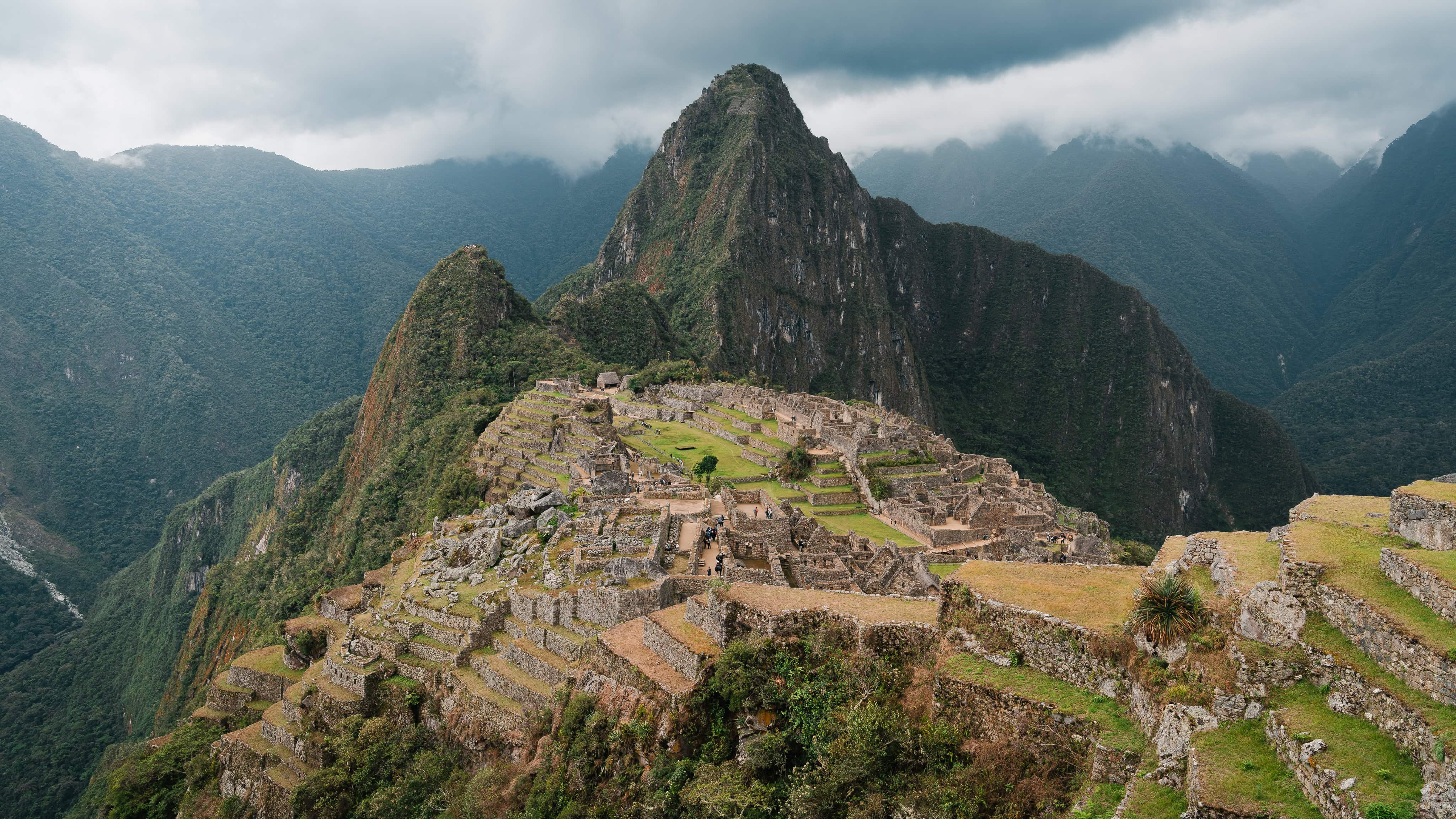
Practical tips & checklist before departure
- Tickets: Purchase them officially on the government platform TuBoleto. The ticket is personalised, so make sure you enter your passport details correctly. Print out or download the PDF and take it with you, along with your ID.
- Booking: Reserve your slots for the Huayna Picchu and Inca Trail circuits several months in advance (depending on the season).
- Money: Many services in Aguas Calientes only accept cash, but trains and hotels accept cards.
- Early start: Photographers and those seeking peace and quiet will benefit from the early morning or late time slots. There are many photo opportunities accessible from the ‘Guardhouse’ and the Sun Portal.
- Respect: Do not buy from souvenir sellers at the monument, do not touch artefacts and do not behave loudly. Official guards and the police can punish violations.
Machu Picchu offers a unique experience, combining archaeological grandeur with breathtaking views and a harmonious blend of culture and nature. However, the site is vulnerable to overcrowding and natural processes. This is why the current rules, time restrictions and permit system are important for its long-term preservation, and not just annoying formalities. With careful planning (e.g. purchasing tickets in advance and arranging transport), adequate acclimatisation and respectful behaviour, your trip will be impressive, sustainable and safe.

